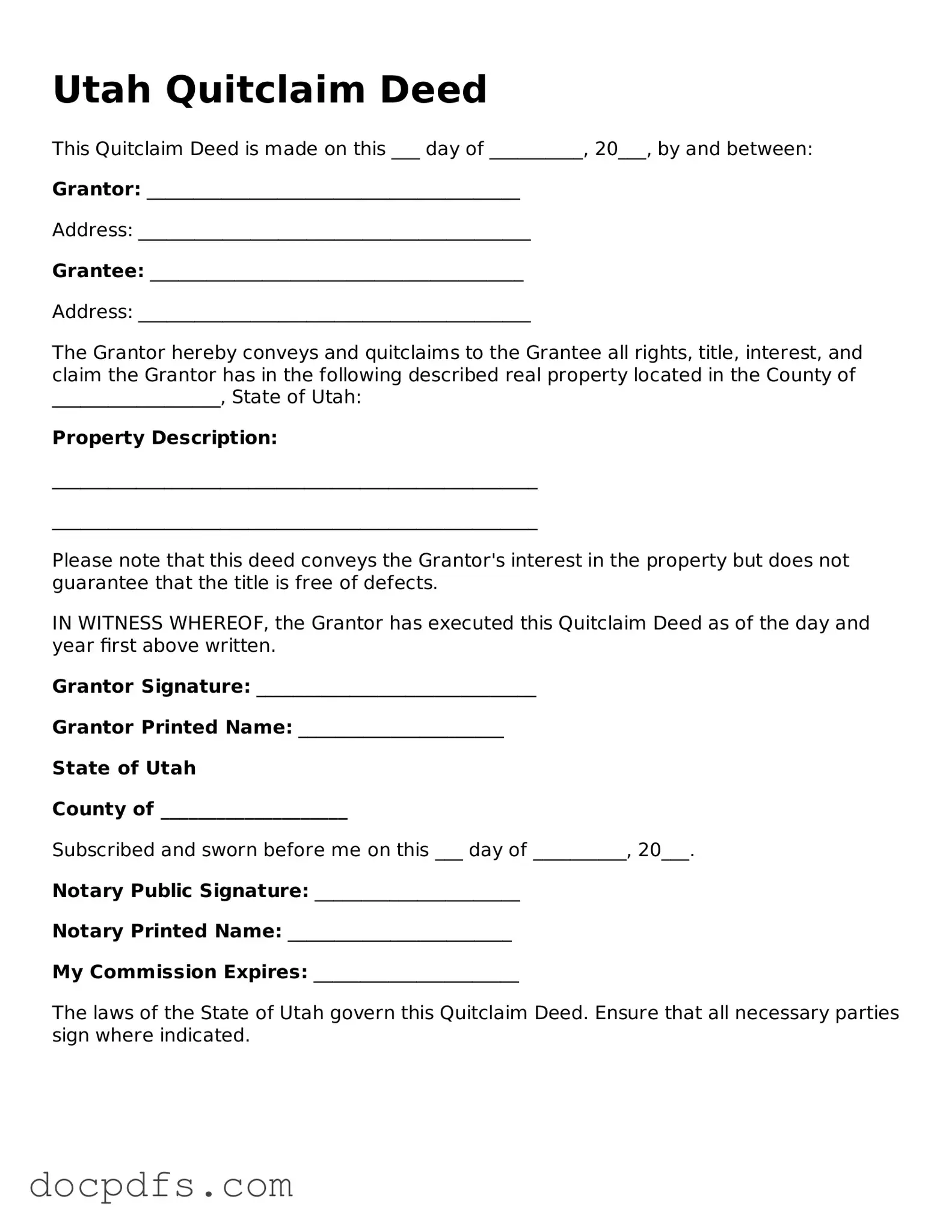What is a Utah Quitclaim Deed?
A Utah Quitclaim Deed is a legal document used to transfer ownership of real property from one person to another. Unlike a warranty deed, a quitclaim deed does not guarantee that the property is free of liens or other claims. It simply conveys whatever interest the seller (grantor) has in the property to the buyer (grantee). This type of deed is often used between family members or in situations where the parties know each other well.
When should I use a Quitclaim Deed in Utah?
There are several situations where a quitclaim deed may be appropriate:
-
Transferring property between family members, such as during a divorce or inheritance.
-
Clearing up title issues, such as when a person’s name needs to be removed from the property title.
-
Transferring property into a trust or business entity.
-
Conveying property as a gift.
It's important to assess the specific circumstances before deciding to use this type of deed, as it offers no warranties regarding the property’s title.
How do I complete a Quitclaim Deed in Utah?
Completing a quitclaim deed involves several steps:
-
Identify the parties involved: Clearly list the names and addresses of both the grantor and the grantee.
-
Describe the property: Provide a detailed legal description of the property being transferred. This can often be found in the property’s original deed or tax records.
-
Sign the document: The grantor must sign the deed in the presence of a notary public.
-
Record the deed: After notarization, the quitclaim deed should be filed with the county recorder’s office where the property is located.
Ensuring that all information is accurate and complete is crucial to avoid any future disputes.
Are there any fees associated with filing a Quitclaim Deed in Utah?
Yes, there are typically fees associated with filing a quitclaim deed. These fees can vary by county but usually include:
-
A recording fee, which is charged by the county recorder's office.
-
Potential additional fees for obtaining certified copies of the recorded deed.
It is advisable to check with the local county recorder’s office for the exact fee structure and any other requirements.
Can I revoke a Quitclaim Deed in Utah?
Revoking a quitclaim deed is generally not possible once it has been executed and recorded. However, if the grantor wishes to reclaim ownership, they may need to execute a new deed to transfer the property back. This new deed could be another quitclaim deed or a different type of deed, depending on the situation. Consulting with a legal professional can provide guidance tailored to specific circumstances.
Do I need an attorney to prepare a Quitclaim Deed in Utah?
While it is not legally required to have an attorney prepare a quitclaim deed, it can be beneficial, especially if there are complex issues involved. An attorney can help ensure that the deed is properly drafted, executed, and recorded. For simple transactions, many individuals choose to prepare the deed themselves using templates or legal document preparation services.
